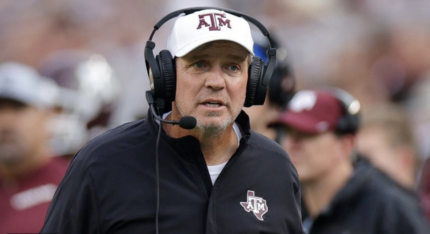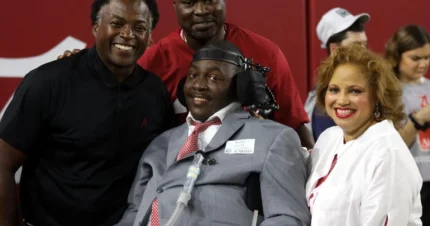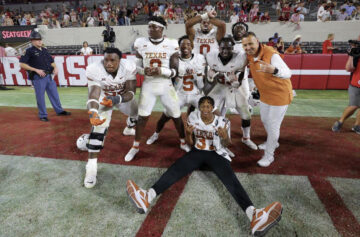Remember when baseball was America's national sport? I don't. I've heard the phrase “America's pastime” enough to know that it surely must have been, but the NFL and college football have completely dominated the sporting conversation since I've been around. If you haven't heard “niche” and “baseball” in the same sentence lately, you haven't really been listening.
I bring this up to state the obvious: nothing lasts forever. What we value now is not what we will value in ten or 20 years. For that reason, it's not safe to assume football will be around forever – especially with the influence that unchecked capitalism can have in industries that produce harm. Philip Morris knows exactly what I'm talking about.
Like many other great American inventions, football has genuine roots. Pop Warner football was created in 1929 because Joe Tomlin was tired of kids vandalizing local factories and wanted to offer them an alternative. Today, Pop Warner sees 425,000 kids come through its system and is the only youth league to have an academic requirement.
It was the epitome of the American spirit and amateur sports, but fast-forward 90 years and economic bastardization has overcome the genuine goals of amateur sports, mocking those who suffer from lifetime injuries in the pursuit of billion dollar TV contracts.
Conference realignment is another shortsighted money making juggernaut, reflecting our values and goals as a society. Millions of people tune in to watch amateur players bang heads and knock each other silly for our entertainment, lining the pockets of conference commissioners like SEC commish’ Mike Slive.
Considering that most of the millions of people watching haven't seen it's pay rise with the current costs of living , and that all of their money gets funneled into one place, there couldn't be a better example of the rich getting richer without anyone batting an eye in today's pop culture.
Steve Eubanks from FoxSportsSouth.com describes Alabama's business model.
Coach Saban’s football team brings publicity and millions of dollars to the university athletics program — money that gets spread around for a new state-of-the-art weight room and an indoor golf practice facility with study halls and a trophy case for the SEC and NCAA Championship trophies, as well as a pristine softball field with amenities that would turn most minor-league general managers green with envy.
The fact is: Money builds the best facilities and the best facilities attract the best recruits; the best recruits win championships, which brings more money into the coffers.
And the process beings anew.
As if institutions like Alabama and Texas A&M weren’t getting enough funding from alumni, corporate donors, ticket sales and licensed merchandise, SEC commissioner Mike Slive just upped the ante. At the annual SEC meeting last week in Destin, Fla., Slive announced that the SEC would distribute $289.4 million to member schools in 2013. That works to roughly $20.7 million per institution.
Of course, Alabama has now won consecutive national titles and will be looking for a third. In fact, the last four national champions came from the state of Alabama and the SEC has won seven BCS titles in a row.
It ain't just the food.
These conferences are gobbling up the middling programs from each conference and using them for revenue streams to continue feeding the beast. Even though Missouri will reap the benefits of being in the moneymaking SEC, they still can't compete with Alabama's cash because the Tide is already so far ahead in that department. It would take years for Missouri to build comparative facilities, let alone a reputation that could rival the Crimson Tide (or Tigers, or Bulldogs, or Gators).
You still might see a team like Texas A&M rise to the top every now and then, given their historical influx of cash from alumnus, because the system is perfectly designed to keep the big-name schools on top of the food chain by limiting resources. However, these moves forced the end of the Big East, simply because they couldn't compete on the football stage. Syracuse and Pitt, who can't compete either, bolted for the safety of a conference that has football cash, damning themselves to eternal mediocrity as the little brothers to Miami, Clemson and FSU.
It completely eliminated UConn's chances of ever competing because they didn't get an invite to the party. Now in the AAC, essentially a basketball conference, the Huskies will never have a chance at winning a national title.
This practice limits the number of players who will be able to play college football at a high level, simply because there are fewer available spots. Given the health concerns surrounding football, this has twice the potential to marginalize a pool of talent that will become smaller and smaller as stories like Junior Seau or Titus Young become more common. Parents are already concerned about children playing football, a concern that is unlikely to wane as players get bigger and faster.
Instead, schools like UConn will stick to basketball, a sport experiencing a massive boon in popularity at the AAU level (another corrupt system, but one that actually benefits the players instead of just the programs). Its system earns most of its money through conference tournaments and the Big Dance, both of which give schools like Butler a shot at glory every couple of years.
Motivation and genuine chances of success are what keeps the beast going from the ground up, not just money. Certainly, money is a motivating factor, but given the pending lawsuits against the NFL that may hold leagues responsible for long-term injuries, it may soon become incredibly expensive to insure at a local level. That could mean additional fees just to play organized football, meaning the game could price itself out of at least some of the already-shrinking talent pool.
Much like President Obama's healthcare movement may have slowed or avoided the rising anger, seen in Europe, the Middle East and South America, due to the economy – which is still growing on Wall Street while wages stagnate, unemployment remains high and 23 percent of American children grow up in poverty – the NCAA's offer of a stipend will cool urges to overthrow the system for now. It is unlikely to stop the movement completely, though. Something is going to crack in the system, and it will most likely be Ed O'Bannon's lawsuit.
Unfortunately, we're more likely to see emails like the ones uncovered by the Rolling Stone from our banking agencies (“Let's hope we are all wealthy and retired before this house of cards falters”) than we are to see football return to the place Joe Tomlin once envisioned.
And I bet Nick Saban's statue and Gordon Gee's bow tie collection outlast us all.



